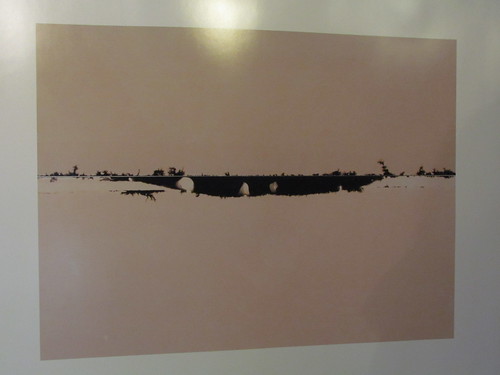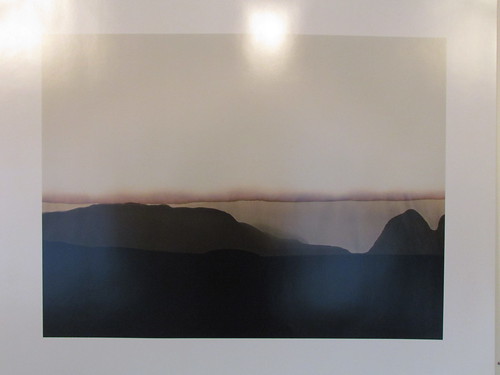Ola Enstad
Hå gamle prestegard
3.3.-15.4.12
sculptures and photos, Chinese heads and imaginary landscapes
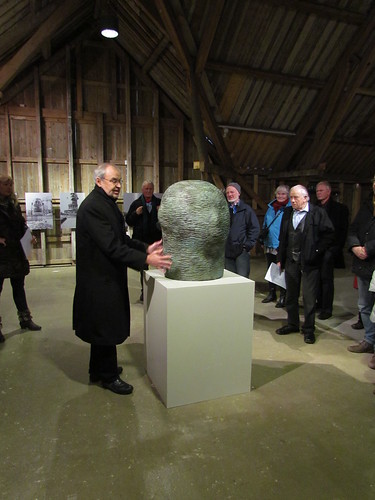
Art by coincidence, or rather controlled coincidences in both bronze sculptures and photographic papers. I had the pleasure of hearing the artist explain his work process. The bronze heads’ structures are made by carving into the mould or adding material to it, which is reversed in the moulding process. With the photographic papers the developing process of a darkroom is performed, but a controlled, partial one, leaving patterns and shapes resembling natural landcapes.
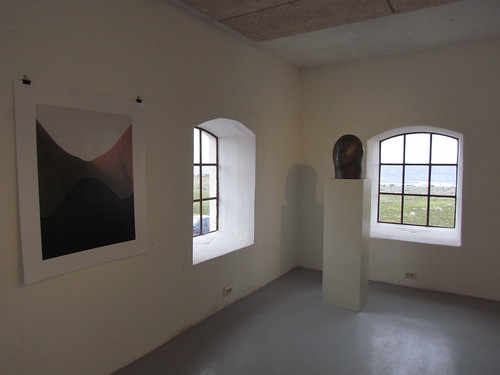
All bronze heads are titled “Chongqing man”, exept one “Beijing-man”. But I am not told where the connection to China is. Is it in the use of material, in the process, or in the shapes. Or are they named after where they have been created? I look for clues, but they are hard to find. Even the facial features are vague, for some heads it is even difficult to distinguish the front and the back of the head. Are they representations of the nameless Chinese, just one of a billion? I am also getting thoughts about the ancient bronze sculptures in China, most spectacular are the bronze soldiers of the emperor’s tomb in Xi’an. But I guess the most plausible explanation is the correct one. I was told that the sculptures were actually made in China.
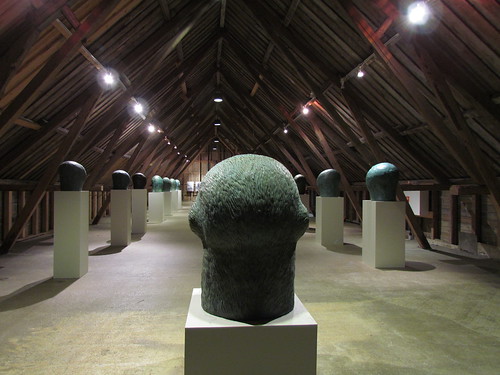
There is also a serie of photos, or rather manipulated photos showing his sculptures in public space. They have gigantic sizes, and are placed at very strange or important sites. It is like the ultimate dream of a sculptor.
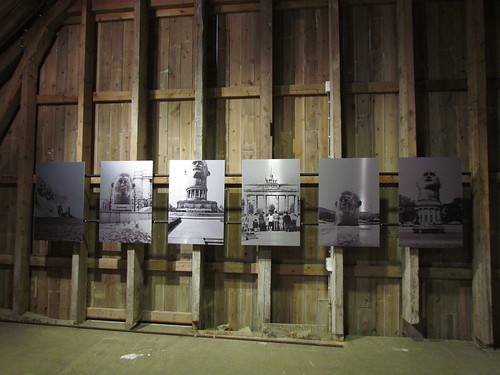
The landscapes seem so real, so natural. It is easy to see the rainy valley, the sandy desert, the classical bridge, the quiet shoreline. It is hard to believe that these are only results of controlled chemistry. But then it is very interesting to admit that even if you try to control a process, the laws of nature will rule. The movements of liquids, the ripples, all follow natural patterns and shapes.
